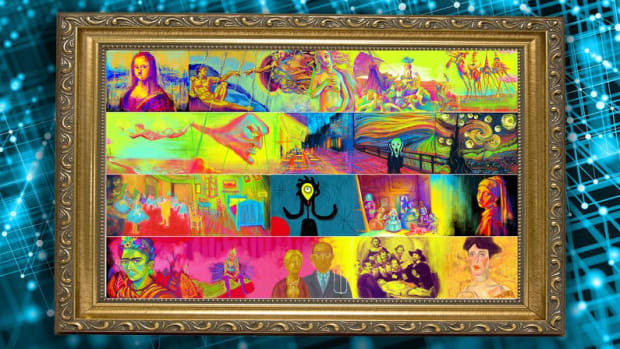#art #artists #knightsbridge #luxury #crypto #digital #assets #NFT #mint #blockchain #DiFi
“For millennia artists sold their work to museums, galleries, or individual collectors, then the artist would get an agreed value for their work, which was often kept in private vaults and displayed to the public intermittently” –Paul Ebeling
Now, with the advent of NFTs artists are able to offer their works for sale as a digital collectibles. Through these blockchain-enabled digital assets, the artist can in certain instances maintain ownership of a piece of their art plus receive royalties from sales made in the secondary market.
NFTs have changed the art scene as artists no longer have to rely on galleries and museums as their sole medium through which they can sell their work. Having realized this was coming about 4 yrs ago we here at Knightsbridge moved to facilitate this shift in perspective to allow for greater freedom and choice in the artists’ work, while bringing in new audiences/buyers and artists to NFTs.
NFTs are changing the world and the art world is increasingly looking toward crypto. But, it is not a get-rich-quick scheme that is portrayed by the main stream media.
While contemporary art is often augmented with technology, we believe that there will always be a place for traditional artwork in galleries and auction houses.
But, a Key aspect of NFTs is that they offer an opportunity for new artists to get a market for their art, especially for artists who are not able to enroll in prestigious fine art graduate programs. On Knightsbridge’s platform, selected artists can sell their work directly to collectors and without the need for intermediaries. They no longer have to worry about geographical, financial and educational barriers.
This is the future of contemporary art and in selected instances fine and the finest fine art works.
Editor’s Notes: NFTs are non-fungible blockchain assets. By contrast, when you exchange one Bitcoin for another, you are essentially retaining the same asset just as you would if you exchanged one dollar bill for another dollar bill. Since these assets are fungible, they can be traded 1-1 without losing any value or changing the nature of the asset.
NFTs are different, they are unique works that are codified on a blockchain and cannot be modified or replicated. Since no 2 NFTs are the same, they cannot be traded on a 1-1 basis like fungible tokens or bank notes. Authors of artwork or other digital documents mint NFTs, which become the only verifiably original version of the work, with all other copies being just that: copies.
What started as a fringe hobby among blockchain enthusiasts is now a full-fledged industry powered mostly by speculative art buyers looking to turn a profit on their investments. And Knightsbridge is bringing NFTs to market in original and very lucrative ways, as this technology paves the way for decentralized, peer-to-peer transactions without the intervention of an intermediary. It is a revolution that goes far beyond the art market.
The blockchain is not just a solution at the consumer’s end. It is a solution to fine art’s great verification problem.
The Big Q: Once an artist has passed away, how can one differentiate between an original and a very sophisticated fake?
The Big A: Fully digitizing the works, and keeping a ledger, is an option for an industry which estimates that up to 50% of artwork in circulation could be forged.
With very fine art traditionally a pursuit of the ultra-wealthy, the ability to purchase fractions of artwork brings the market to a broader consumer base, plus there are significant benefits to those who trade fine art as an asset class, with competitive brokerage fees.
Have a healthy, prosperous week, Keep the Faith!









